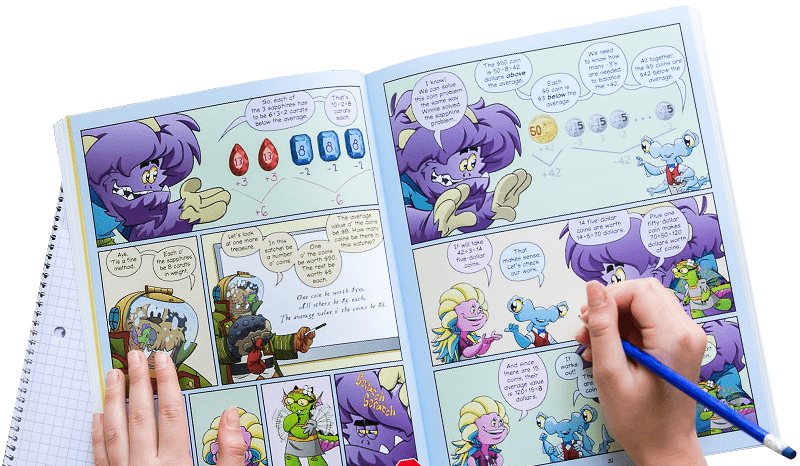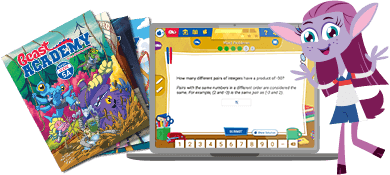Cookie Cutter
Hone your spatial skills by tracing shapes on a piece of paper. Whoever fits the last shape wins.
Instructions
Cut any shape from cardboard. (Cereal box cardboard works well because it's thin enough to cut easily but thick enough to hold up when tracing.) Your shape should be a bit bigger than a playing card. Ideally, it will fit on a piece of paper about 5-8 times. Here are some ideas for shapes:

Then, take turns tracing the shape on a piece of paper. Using different colors is fun, but not necessary.

Shapes aren't allowed to overlap each other, or go over the edge of the paper. If you can't see white all around the shape before tracing, it's too close to another shape or the edge of the paper.

The player who fits the last shape wins!
Don't forget: it's Beast Academy Playground, not Beast Academy Study Hall. Change the rules, be silly, make mistakes, and try again. The Variations and Learning Notes are here for you if you want to dive deeper, but not all of them apply to learners of every age. The most important thing is to have fun.
This game adapted from "Passform" by Walter Joris.What do you think of this activity?
We're always looking to improve. Submit your feedback to us below.
- cardboard
- scissors
- paper
- pencil
- spatial reasoning
- shapes
- strategic thinking
- symmetry
- MP1
- K.MD.A.1
- K.MD.A.2
- 4.G.A.3

Ready to level up?
Keep problem solving with Beast Academy’s full math curriculum for students ages 6–13. Check out our captivating comic book series and immersive online platform.
LEARN MOREBring problem-solving to your classroom
Keep your entire class engaged with a full book and online math curriculum, for students ages 6–13. 98% of teachers say they’re satisfied with Beast Academy.
LEARN MORE



Ready to level up?
Keep problem solving with Beast Academy’s full math curriculum for students ages 6–13. Check out our captivating comic book series and immersive online platform.
LEARN MOREBring problem-solving to your classroom
Keep your entire class engaged with a full book and online math curriculum, for students ages 6–13. 98% of teachers say they’re satisfied with Beast Academy.
LEARN MORE
Sign up to be notified when new videos are released.















































